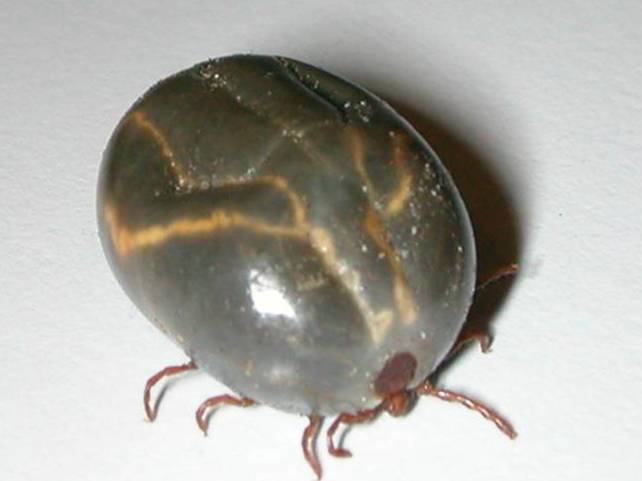Tick species sweeping US drains animals dry of blood and reproduces without mating
Populations of parasitic arachnid have recently arrived in suburbs of New York City

Your support helps us to tell the story
From reproductive rights to climate change to Big Tech, The Independent is on the ground when the story is developing. Whether it's investigating the financials of Elon Musk's pro-Trump PAC or producing our latest documentary, 'The A Word', which shines a light on the American women fighting for reproductive rights, we know how important it is to parse out the facts from the messaging.
At such a critical moment in US history, we need reporters on the ground. Your donation allows us to keep sending journalists to speak to both sides of the story.
The Independent is trusted by Americans across the entire political spectrum. And unlike many other quality news outlets, we choose not to lock Americans out of our reporting and analysis with paywalls. We believe quality journalism should be available to everyone, paid for by those who can afford it.
Your support makes all the difference.An east-Asian species of tick capable of swarming animals and sucking their blood so fast they die has established itself in the US, with eight states on the eastern seaboard reporting the presence of the pest.
Public health officials have said they are concerned about the growing presence of the Asian longhorned tick, (Haemaphysalis longicornis), which carries and transmits unpleasant diseases in its homeland.
In the US none have yet been found with any human diseases. In Asia, however, the species carries a virus that has been known to have a fatality rate of up to 30 per cent.
Though the invasive species has already spread to the densely populated New York suburbs, at the moment the greatest threat remains to livestock pets, and wild animals.
The ticks can attack en masse and drain animals of blood so quickly they die – a cause of death known as exsanguination.
Initially hard to see with the naked eye, following a blood meal the ticks swell up to about the size of a baked bean, and females can then lay hundreds of eggs.
Populations of the ticks can explode rapidly as the species is able to reproduce asexually – giving rise to an army of ravenous clones.
“One tick can crank out females in fairly large numbers,” Thomas Yuill, a retired pathobiologist at the University of Wisconsin, told the New York Times.
Tadhgh Rainey, an entomologist at the public health department of Hunterdon County in New Jersey, was first to report the discovery of large numbers of the tick, in a paper published in May this year.
“All life stages were found on the sheep, which had no history of travel outside the country,” he said.
In a subsequent interview he said the owner came to his department with ticks on her hands and wrists.
“I thought she’d have a few,” Mr Rainey said. “But she was covered in them, easily over 1,000 on her pants alone.”
New Jersey wildlife officials are calling for anyone who spots the bloodsucking arachnid to contact them immediately.
“This tick is a known pest in deer and has a wide host range, thus can infect a range of wildlife species,” said department officials, who described the pest as “exotic”.
The diseases the ticks have been known to spread include Rickettsia japonica, the bacteria which causes oriental spotted fever, and Theileria orientalis, a parasite that causes cattle theileriosis – in which cattle suffer fever and sometimes breathing difficulties and weight loss.
Studies have also indicated that some populations of the tick in China may harbour a virus that causes SFTS – severe fever with thrombocytopenia syndrome.
The disease, first identified in 2009, causes fever, vomiting, hemorrhaging, and organ failure, and initially had a fatality rate of 30 per cent, though that has fallen significantly since its identification.
Maryland became the eighth state to report the presence of the tick this week after they were found on white-tailed deer.
The United States department of agriculture, as well as the Centre for Disease Control are working to evaluate how the presence of the tick is playing out in the environment, Mr Rainey said.
Join our commenting forum
Join thought-provoking conversations, follow other Independent readers and see their replies
Comments